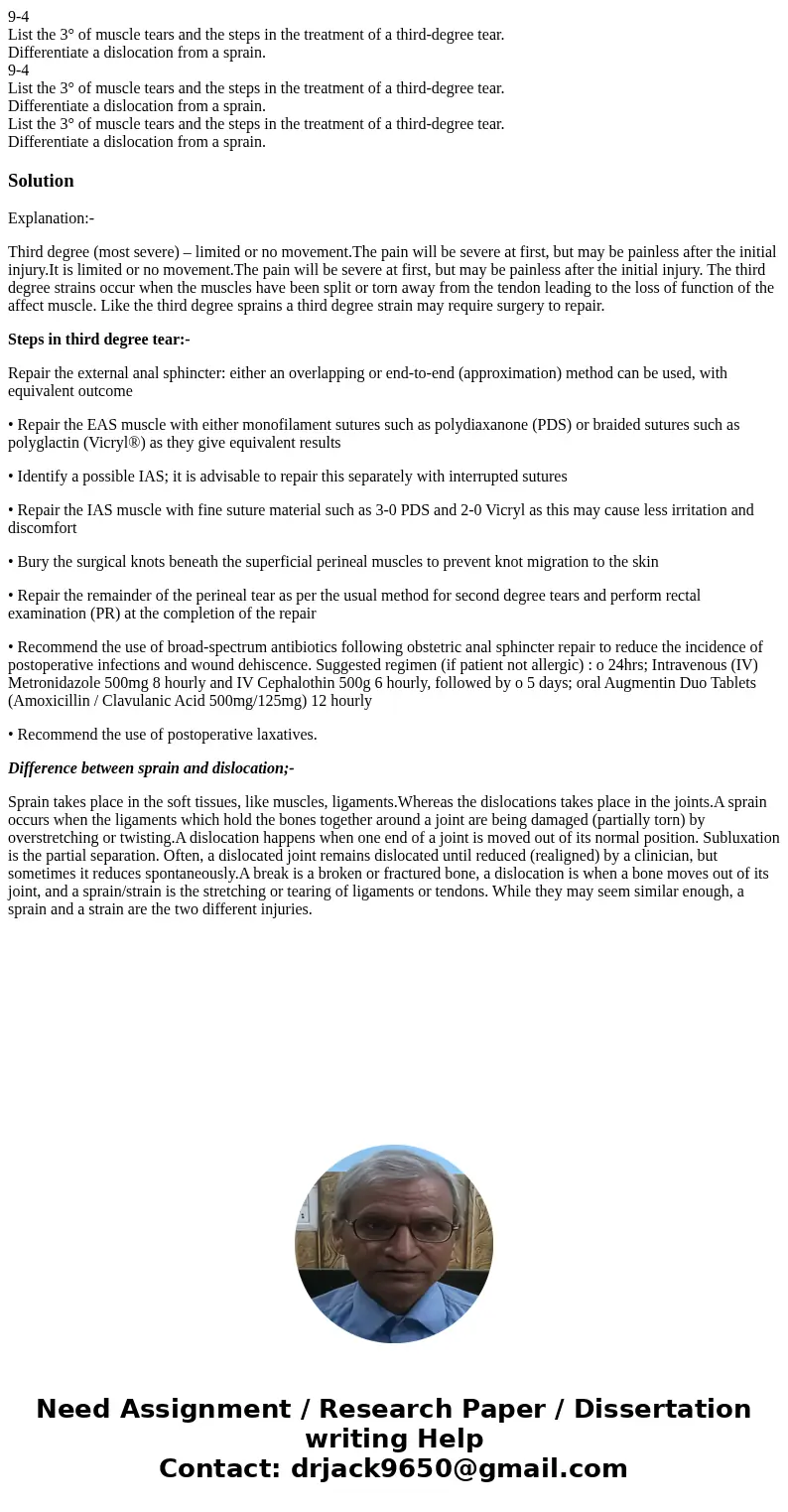94 List the 3 of muscle tears and the steps in the treatment
Solution
Explanation:-
Third degree (most severe) – limited or no movement.The pain will be severe at first, but may be painless after the initial injury.It is limited or no movement.The pain will be severe at first, but may be painless after the initial injury. The third degree strains occur when the muscles have been split or torn away from the tendon leading to the loss of function of the affect muscle. Like the third degree sprains a third degree strain may require surgery to repair.
Steps in third degree tear:-
Repair the external anal sphincter: either an overlapping or end-to-end (approximation) method can be used, with equivalent outcome
• Repair the EAS muscle with either monofilament sutures such as polydiaxanone (PDS) or braided sutures such as polyglactin (Vicryl®) as they give equivalent results
• Identify a possible IAS; it is advisable to repair this separately with interrupted sutures
• Repair the IAS muscle with fine suture material such as 3-0 PDS and 2-0 Vicryl as this may cause less irritation and discomfort
• Bury the surgical knots beneath the superficial perineal muscles to prevent knot migration to the skin
• Repair the remainder of the perineal tear as per the usual method for second degree tears and perform rectal examination (PR) at the completion of the repair
• Recommend the use of broad-spectrum antibiotics following obstetric anal sphincter repair to reduce the incidence of postoperative infections and wound dehiscence. Suggested regimen (if patient not allergic) : o 24hrs; Intravenous (IV) Metronidazole 500mg 8 hourly and IV Cephalothin 500g 6 hourly, followed by o 5 days; oral Augmentin Duo Tablets (Amoxicillin / Clavulanic Acid 500mg/125mg) 12 hourly
• Recommend the use of postoperative laxatives.
Difference between sprain and dislocation;-
Sprain takes place in the soft tissues, like muscles, ligaments.Whereas the dislocations takes place in the joints.A sprain occurs when the ligaments which hold the bones together around a joint are being damaged (partially torn) by overstretching or twisting.A dislocation happens when one end of a joint is moved out of its normal position. Subluxation is the partial separation. Often, a dislocated joint remains dislocated until reduced (realigned) by a clinician, but sometimes it reduces spontaneously.A break is a broken or fractured bone, a dislocation is when a bone moves out of its joint, and a sprain/strain is the stretching or tearing of ligaments or tendons. While they may seem similar enough, a sprain and a strain are the two different injuries.

 Homework Sourse
Homework Sourse